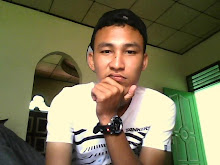 Lampung had a rich and varied weaving tradition and its has its own traditions, high valued handicraft and art creations such as woven cloth, interwoven by gold threads called "tapis". For the Lampung community, tapis cloth reflects the status of the owner. Take Tapis Raja Medal, for example. This particular type of cloth may be worn only during traditional ceremonies by the upper class of the indigenous Lampung ethnic group, such as family members of traditional community elders or tribal chiefs. Even among the upper class, there are special rules that must be observed when wearing the cloth.
Lampung had a rich and varied weaving tradition and its has its own traditions, high valued handicraft and art creations such as woven cloth, interwoven by gold threads called "tapis". For the Lampung community, tapis cloth reflects the status of the owner. Take Tapis Raja Medal, for example. This particular type of cloth may be worn only during traditional ceremonies by the upper class of the indigenous Lampung ethnic group, such as family members of traditional community elders or tribal chiefs. Even among the upper class, there are special rules that must be observed when wearing the cloth.Traditionally, Lampung textiles were used as part of religious ceremonies such as weddings and circumcisions.The type of the ceremony will determine which tapis cloth should be worn. For weddings and cakak pepadun, only Tapis Jung Sarat, Raja Medal, Raja Tunggal, Dewasano, Limar Sekebar, Ratu Tulang Bawang and Cucuk Semako can be worn.
If a piece of tapis cloth is worn for a cangget, an event in which a dance is performed to honor an important guest, then it must be one with any of these motifs: Bintang Perak, Tapis Balak, Pucuk Rebung, Lawek Linau or Kibang. For elderly women, the tapis worn is usually Tapis Agheng, Cucuk Pinggir or Tapis Kaca. If a piece of tapis cloth is worn when it should not be, a traditional sanction will be imposed on the wearer. He or she will be admonished by the other members of the community. If, for example, someone who has yet to meet the traditional requirements for wearing Tapis Medal insists on wearing it during a traditional ceremony, the cloth may be taken off in public.
 The Pucuk Rebung motif, a symbol of prosperity, remains the main motif used in tapis cloth today. Also still popular nowadays is the spiral motif, the symbol of worship of the sun and nature. The decorative motif of the Tree of Life is also believed to signify the unity and oneness of God, the creator of the universe.
The Pucuk Rebung motif, a symbol of prosperity, remains the main motif used in tapis cloth today. Also still popular nowadays is the spiral motif, the symbol of worship of the sun and nature. The decorative motif of the Tree of Life is also believed to signify the unity and oneness of God, the creator of the universe.However, modernization has caused tapis cloth to lose its sacred quality. Today, it is worn not only by noble families and traditional community elders, but also by lower class Lampung people. There is a difference, though.
 The thread used to embroider the cloth worn by traditional community elders is usually mixed with gold but for ordinary people, the thread is gold in color only.
The thread used to embroider the cloth worn by traditional community elders is usually mixed with gold but for ordinary people, the thread is gold in color only.Despite this difference, the motifs embroidered on tapis cloth worn by ordinary people are still beautiful. However, the cloth may only be worn for certain traditional rites, such as bumammat, an event in which youngsters recite the Koran in a traditional hall in the presence of community elders and others as evidence that they can read the Koran.





0 komentar:
Posting Komentar